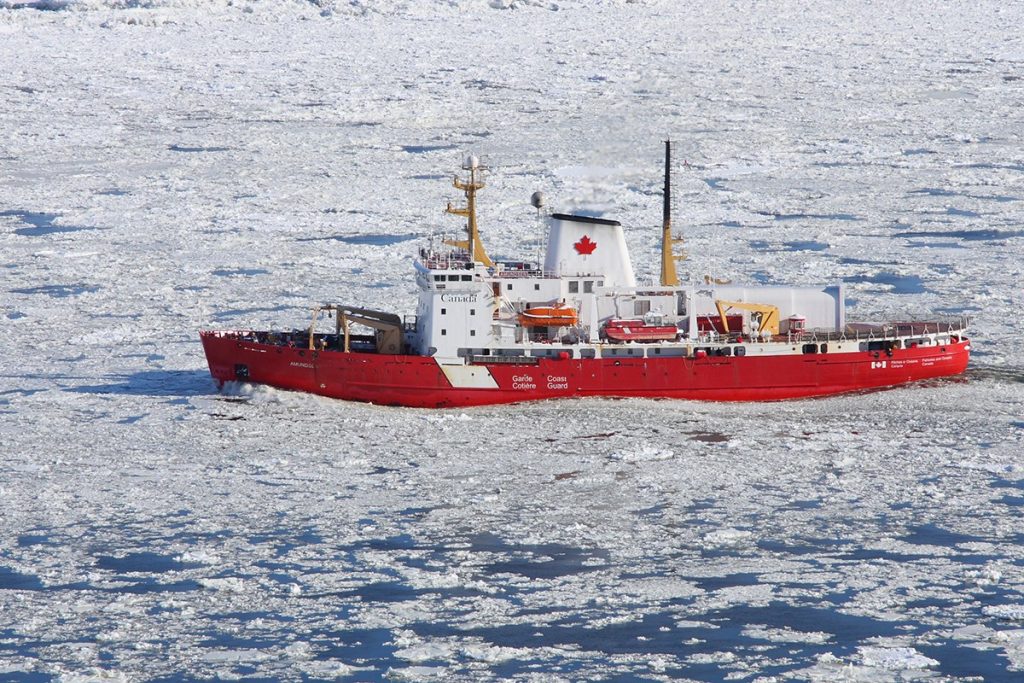Arctic Ice Hazards Caused by Climate Change Prevent Launch of Climate Change Study

(EnviroNews USA Headline News Desk) — On June 12, the first leg of the Hudson Bay System Study (BaySys) into Arctic climate change was canceled due to hazardous ice conditions induced by climate change. The four year, $17 million, University of Manitoba-led project, brings together 40 scientists on the Canadian Research Icebreaker CCGS Amundsen.
“Climate-related changes in Arctic sea ice not only reduce its extent and thickness but also increase its mobility, meaning that ice conditions are likely to become more variable and severe conditions such as these will occur more often,” Dr. David Barber, Expedition Chief Scientist and BaySys Scientific Lead, explained in a press release.
Though the researchers had already accelerated their mobilization by six days to carry out safety operations thoroughly, the southward movement of marine sea ice was too dangerous, and “a second week of delay meant [the] research objectives just could not be safely achieved.”
The Sea Ice Research Team was able to study the hazardous ice and determined a large portion of it had travelled from the high Arctic. They also collected data on the physics of the ice, atmosphere and ocean, which “will contribute to the understanding of these events and assist Canada in preparing for climate change driven increases in marine ice hazards.”
Further studies in the 2017 Amundsen Expedition set to resume July 6 and a 2018 BaySys program is also in development, according to Dr. Louis Fortier, Scientific Director of the Amundsen and ArcticNet Science programs.
“The research of our scientists clearly indicate that climate change is not something that is going to happen in the future – it is already here,” the release states, citing effects to “northern ecosystems and communities, but also the environments and people living in the south of Canada.”
As reported by EnviroNews, Arctic warming is on the rise and melting Alaskan permafrost is giving off more greenhouse gas emissions than the ecosystem can absorb. Meanwhile, in the Northeast U.S., the iconic, economically vital seafood industry is threatened by ocean warming caused by climate change.
Adding fuel to the fire, in its first few months, the Trump Administration announced its intention to leave the Paris Climate Agreement, reportedly censored government climate change discussion and fired Environmental Protection Agency (EPA) scientists. The EPA now continues to deny the validity and risks of global warming and of humanity’s effect on the planet’s climate.
RELATED CLIMATE STORIES FROM ENVIRONEWS
Alaska’s Fast-Melting Permafrost Now Releasing More Carbon Than it Can Absorb, Worsening Climate
(EnviroNews Alaska) – Alaska’s warming permafrost is now giving off more greenhouse gases than it traps during the growing season, according to a new study published May 8, 2017, in the Proceedings of the National Academy of Sciences (PNAS). The amount of carbon trapped in Arctic soil is…
Northeast U.S. Seafood Industry in Jeopardy From Climate-Driven Ocean Warming, Acidification
(EnviroNews DC News Bureau) – A seafood industry that brought nearly 600 million pounds of fish to the table in 2015, put 97,000 people to work and added $4.8 billion to the economy is now at risk due to a changing climate. Warming seas and ocean acidification are…
Center for Biological Diversity Strikes Back After Pruitt and Zinke Fire Science Boards
(EnviroNews DC News Bureau) – Washington D.C. – The Center for Biological Diversity (the Center) filed a Freedom of Information Act (FOIA) request on May 8, 2017, seeking documents related to the abrupt dismissal of science advisors at the Environmental Protection Agency (EPA). On Friday, May 5, the…
FILM AND ARTICLE CREDITS
- Julia Travers - Journalist, Author



